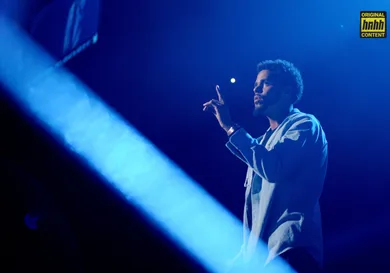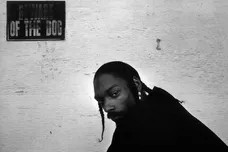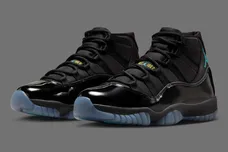In matters of GOAT discussion, a hip-hop artist is, perhaps unfairly, often held to simple criteria. Does he or she have a classic under his or her belt? More than one is an added bonus. For the most part, one is enough to clinch a spot in the hierarchy. And yet not every classic is created equal. Some are as immediate as they are undeniable, like DMX’s It’s Dark And Hell Is Hot or Wu-Tang Clan’s Enter The 36 Chambers. Others are studied and analyzed with a more scrutinous eye, held to a standard set by the aforementioned albums and their ilk. Sometimes, an album’s quality is so contested at the moment that a foregone conclusion can only arrive with time’s passage. Today, on the day J. Cole’s 2014 Forest Hills Drive celebrates its fifth birthday today, it’s time to reflect on whether this truly is the “classic with no features.”
The third studio album from the self-proclaimed “Middle Child,” Cole’s acclaimed project arrived on the heels of a divisive effort in Born Sinner; that’s not to say the project was weak, but many felt it didn’t live up to Cole’s massive artistic potential. Despite grappling with label-led image uncertainty or the pesky narrative of having “boring” content, the North Carolina lyricist remained secure in his spot as a new school great, a bastion of hope that bars could retain their prominence on a mainstream stage. Oft positioned alongside Kendrick Lamar and Drake as a generational trifecta, Cole found himself looking more and more like a cult hero. With that in mind, Forest Hills Drive made for a pivotal project in his discography, a chance to establish himself further with an undeniable artistic tour-de-force -- one penned entirely on the solo front, at that.
Moving away from some of the more commercialized sounds that plagued his prior albums, Cole embraced the qualities of his comfort zone. As a result, his third album was void of any major radio hit; even the project’s lead single "Apparently" was risk-taking in a sense, with Cole flexing his melodic chops over his a purist’s production. As the track progressed, it became clear that his words and delivery were as important as his hooks, if not more so. For J. Cole, publicity through antics was never a question. The craft itself was the thing. It’s what helped him resonate so strongly as a public figure, even when he seemed to deviate from his own principles. The idea he came to represent manifested in full on Forest Hills Drive, perhaps for the first time in his budding career. At least on a creative level.
Craig Barritt/Getty Images
Consider that the aura cast by Nas and Jay-Z’s respective declarations that hip-hop and autotune were both laid to rest still lingered. Vain wishes for a shapeless formless return to “real hip-hop” were uttered, and the shifting musical landscape had yet to land on a favored sound. As such, Cole stood emblematic of a nostalgic era, a modern-day boom-bap icon. One who still valued the importance of narrative structure, deftly blurring the lines between autobiographical honesty and heightened conceptuality. Forest Hills Drive feels like an immensely personal album, one wherein we can watch carefully curated scenes unfold from angles of Cole’s choosing. Songs like “A Tale Of Two Citiez” captured Cole at his hungriest, offerings for the thrillseekers. “Wet Dreamz” served as both a window into an unexplored topic and a moment of comedic relief, although some might be quick to cry “oversharing.” “G.O.M.D.” revealed the technical skillset that foreshadowed the legendary feature run of 18’, while the minimalist backdrop of “January 28th” proved the power of words could move the masses. “No Role Modelz” found Cole exploring his past and present selves, culminating in the hardest-hitting dose of mainstream conscious rap since Kanye West’s College Dropout.
Like the same prophet he once deemed lost, Cole’s masterstroke arrived by way of connection. Mainly, the connection he strove to build between himself and his fans, who returned the favor by showing up in droves. Even with no features, 2014 Forest Hills Drive ultimately went platinum two years removed from its release; today, it sits pretty at triple plat. For many who consider the project to be a classic, especially in the context of this past decade, a perusal through a variety of online forums reveals a notable truth. Memories were made to this album, many of them seeming to enhance the listening process itself. In the same way nostalgia functions in Cole’s own writing, fans have come to associate the project with formative lifestyle events, thick with that longing so often associated with the “coming of age.”
It’s for that reason 2014 Forest Hills Drive elicits somewhat of a divisive response. Even though Cole is widely considered a legend, those who failed to connect with his first no-features effort might struggle to elevate its status to classic. And yet for those who did, the album remains a pivotal chapter in their own coming-of-age story. It's simply a matter of which camp you belong to.







